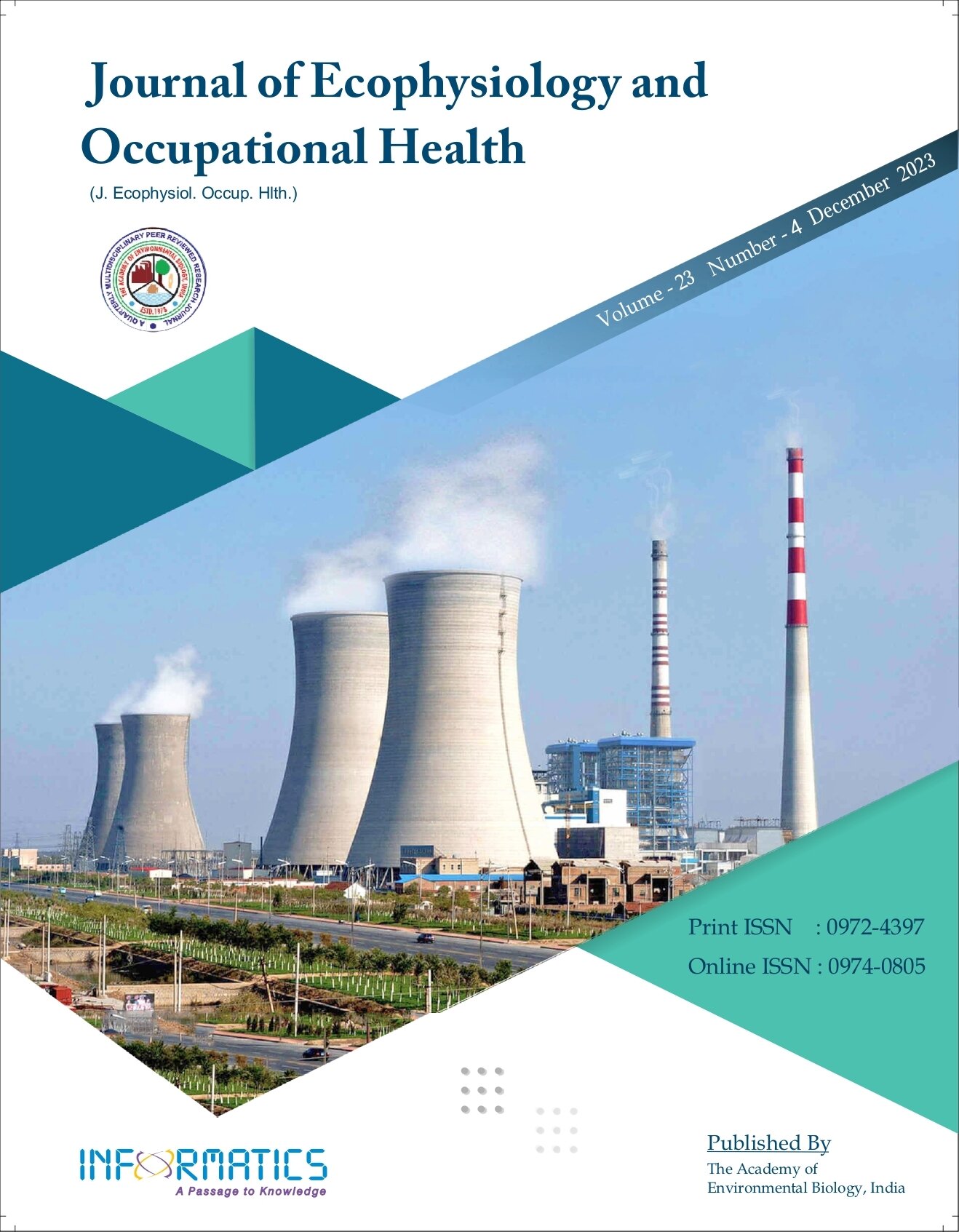Effectiveness of Callisthenic Exercises on BMI, Waist-Hip Ratio, Depression and Quality of Life in Class 1 Obese Young Adult Girls with Poly Cystic Ovarian Syndrome: An Experimental Study
DOI:
https://doi.org/10.18311/jeoh/2023/35375Keywords:
Body Mass Index, Calisthenics, Depression, Polycystic Ovarian Syndrome, Quality of LifeAbstract
Polycystic Ovarian Syndrome, or PCOS, is estimated to be the most common endocrine illness affecting women of reproductive age, affecting 28% of young women. A trend toward grade 1 obesity is predicted by PCOS patients’ BMI when compared to females in the same age group. Body weight exercises, known as calisthenics, involve a variety of movements that employ the body’s weight as resistance. Because the movements are relatively easy to learn, pose little risk of harm, and offer a distinct exercise routine that may be more enjoyable, calisthenics may be a beneficial replacement for resistance training. To examine how callisthenic workouts, affect young adult girls with PCOS’s BMI, waist-hip ratio, depressive symptoms, and QOL. The study’s objective was to examine the effect of callisthenic exercises on BMI, waist-hip ratio, depression, and QOL in class 1 obese young adult girls with PCOS. An Experimental study was carried out, in and around Pune city. A total of 52 patients with PCOS, and class 1 obesity were included in this study; with aged 18 to 25 were chosen using simple random sampling. The individuals underwent callisthenic exercises for 6 weeks, the pre- and postdata were measured using the waist-hip ratio, BMI, Beck Depression Inventory, and PCOS Health Related QOL. The study concluded that calisthenics helped class 1 obese young adult girls with PCOS enhance their QOL and lower their BMI, waisthip ratio, and Beck depression score.
Downloads
Metrics
Downloads
Published
How to Cite
Issue
Section
License
Copyright (c) 2023 Aishwarya Sudhakar Wayadande, Priyanka Honklas

This work is licensed under a Creative Commons Attribution 4.0 International License.
Accepted 2023-11-20
Published 2023-12-15
References
Gill H, Tiwari P, Dabadghao P. Prevalence of polycystic ovary syndrome in young women from North India: A Community-based study. Indian Journal of Endocrinology and Metabolism. 2012; 16(Suppl2):S389. DOI: https://doi.org/10.4103/2230-8210.104104
Ajmal N, Khan SZ, Shaikh R. Polycystic Ovary Syndrome (PCOS) and genetic predisposition: A review article. European Journal of Obstetrics and Gynecology and Reproductive Biology. 2019; 3:100060. DOI: https://doi.org/10.1016/j.eurox.2019.100060
Angin P, Yoldemir T, Atasayan K. Quality of life among fertile PCOS patients. Archives of gynecology and obstetrics. 2019; 300(2):461-7. DOI: https://doi.org/10.1007/s00404-019-05202-z
Cinar N, Kizilarslanoglu MC, Harmanci A, Aksoy DY, Bozdag G, Demir B, Yildiz BO. Depression, anxiety, and cardiometabolic risk in polycystic ovary syndrome. Human Reproduction. 2011; 26(12):3339-45. DOI: https://doi.org/10.1093/humrep/der338
Vizza L, Smith CA, Swaraj S, Agho K, Cheema BS. The feasibility of progressive resistance training in women with polycystic ovary syndrome: A pilot randomized controlled trial. BMC Sports Science, medicine and rehabilitation. 2016; 8(1):1-2. DOI: https://doi.org/10.1186/s13102-016-0039-8
Shetty D, Chandrasekaran B, Singh AW, Oliver Raj J. Exercise in polycystic ovarian syndrome: An evidencebased review. Saudi Journal of Sports Medicine. 2017; 17(3):123. DOI: https://doi.org/10.4103/sjsm.sjsm_10_17
Akbarzadeh M, Behbahani BM, Naderi T, Dabbaghmaneh M, Zare N. The survey of central obesity and BMI associated with different phenotypes of polycystic ovary syndrome in adolescents. International Journal of Africa Nursing Sciences. 2015; 3:82-5. DOI: https://doi.org/10.1016/j.ijans.2015.09.001
Yadav S, Tarware R. Waist hip ratio: An anatomical predictive marker of risk of PCOS. International Journal of Reproduction, Contraception, Obstetrics and Gynecology. 2019; 8(4):1630-3. DOI: https://doi.org/10.18203/2320-1770.ijrcog20191231
De Souza Santos D, De Oliveira TE, Pereira CA, Evangelista AL, Sales D, Bocalini RL, Rhea MR, Simao R, Teixeira CV. Does a calisthenics-based exercise program applied in school improve morpho-functional parameters in youth? Journal of Exercise Physiology Online. 2015; 18(6):52-61.
Thomas E, Bianco A, Mancuso EP, Patti A, Tabacchi G, Paoli A, Messina G, Palma A. The effects of a calisthenics training intervention on posture, strength, and body composition. Isokinetics and Exercise Science. 2017; 25(3):215-22. DOI: https://doi.org/10.3233/IES-170001
Banting LK, Gibson-Helm M, Polman R, Teede HJ, Stepto NK. Physical activity and mental health in women with polycystic ovary syndrome. BMC Women’s Health. 2014; 14(1):1-9. DOI: https://doi.org/10.1186/1472-6874-14-51
 Aishwarya Sudhakar Wayadande
Aishwarya Sudhakar Wayadande







